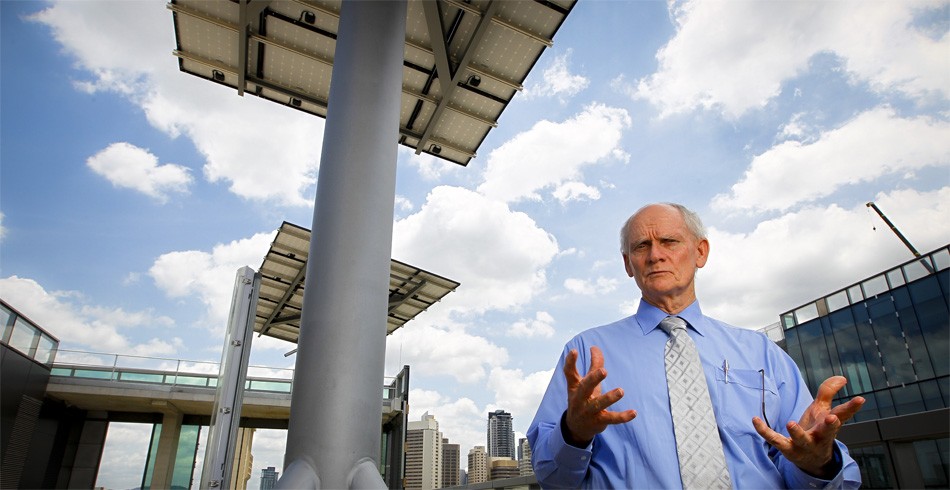QUT has partnered with a Japanese energy company to trial cutting edge renewable energy technologies.
The partnership between the university and Sumitomo Electric Industries Ltd offers the potential to make Queensland’s energy system significantly more efficient, robust and sustainable.
A demonstrator Sumitomo Electric concentrator photovoltaic (CPV) system will be installed at the Queensland Government’s Department of Agriculture and Fisheries, Redlands Research Facility in Brisbane and operated and tested by QUT researchers.
Professor Ian Mackinnon, from QUT’s Institute for Future Environments, said the partnership would complement and boost QUT’s existing renewable energy research program.
“Our partnership with Sumitomo Electric gives us the opportunity to study the operation of large-scale renewable energy generation and storage technologies in Queensland’s climate,” Prof Mackinnon said.
“We have a microgrid facility at QUT Gardens Point Campus partly powered by solar ‘trees’ on the Science and Engineering Centre’s roof which allows us to model and test different configurations of power systems incorporating renewable energy sources and distributed storage.”
Professor Mackinnon said CPV technology was around 2.5 times more efficient than standard photovoltaic technology.
“Although they look similar to traditional photovoltaic panels, CPV systems have a layer of lenses over the top of the photovoltaic cells that concentrates the sunlight and makes the system far more efficient,” he said.
“CPV systems are ideal for places like Queensland that receive high levels of direct sunlight.
“They operate best in clear, sunny conditions, because light filtered through clouds cannot be easily concentrated.
“CPV systems can operate efficiently at high temperatures typical of Queensland and, because they track the sun, they can provide stable power generation for longer periods of the day.”
Professor Mackinnon said the CPV system would be installed and operational at the Redlands Research Facility early next year, when monitoring and assessment of the system would begin.
“Sumitomo Electric is also seeking to demonstrate a redox flow battery in conjunction with the CPV technology in due course,” he said.
“Redox flow batteries are rechargeable with several technical qualities that make them more suitable for large-scale energy storage than other battery types. For example, they have a long life cycle and the ability to operate at very high currents.
“CPV technology combined with redox flow batteries promises to be a crucial part of the future energy mix in Australia and around the world.
“In rural and regional Queensland in particular, there is great potential for megawatt-capacity renewable energy projects using CPV systems and redox flow batteries.”
Professor MacKinnon said QUT looked forward to a long partnership with Sumitomo Electric through which other renewable energy technologies and rapidly moving fields could be developed, such as advanced automotive systems, advanced materials and superconductivity.







